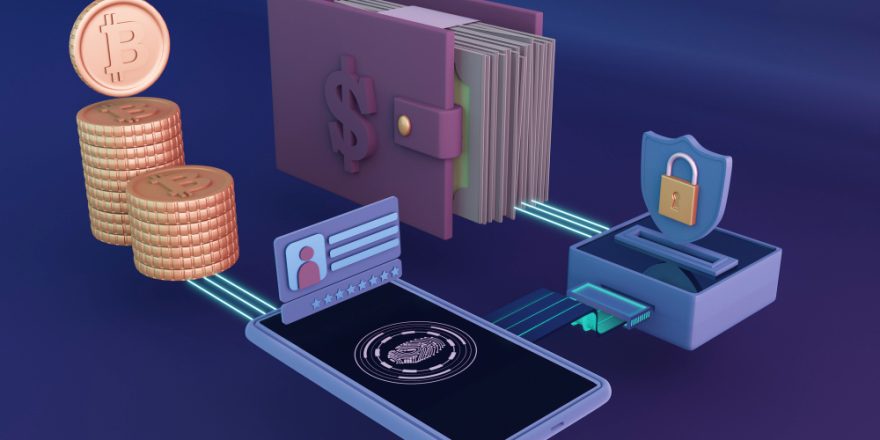Churn is a significant challenge for SaaS companies. Losing customers not only impacts revenue but also affects long-term growth and sustainability. In 2024, with the SaaS market more competitive than ever, combating churn and winning back lost customers has become crucial. This guide will provide actionable strategies to reduce churn and effectively regain lost customers, helping your SaaS business thrive.
Understanding Churn
What is Churn?
Churn, or customer attrition, refers to the percentage of customers who stop using your service over a specific period. It’s a key metric for SaaS companies as it directly affects recurring revenue.
Types of Churn
Voluntary Churn: Customers intentionally cancel their subscriptions due to dissatisfaction, better alternatives, or no longer needing the service.
Involuntary Churn: Customers are lost due to payment failures or other involuntary reasons, like expired credit cards.
Why Combat Churn?
Reducing churn is critical for several reasons:
Revenue Retention: Maintaining your customer base ensures steady revenue.
Customer Lifetime Value (CLTV): Higher retention increases the average CLTV, boosting overall profitability.
Positive Word-of-Mouth: Satisfied customers are more likely to recommend your service, bringing in new users.
Lower Acquisition Costs: Retaining existing customers is more cost-effective than acquiring new ones.
Strategies to Combat Churn
Enhance Onboarding Processes
First impressions matter. A smooth onboarding process helps customers understand your product’s value quickly and reduces early churn. Key steps include:
Personalized Onboarding: Tailor the onboarding experience to different customer segments.
In-App Guidance: Use tooltips, tutorials, and checklists to guide users.
Customer Support: Offer proactive support during the initial stages to address any issues.
- Monitor Customer Engagement
Tracking how customers interact with your product can reveal early signs of potential churn. Implementing usage analytics allows you to:
Identify Engagement Metrics: Focus on key activities that correlate with retention.
Segment Users: Group users based on engagement levels to provide targeted interventions.
Automate Alerts: Set up alerts for decreasing usage patterns to take timely action.
- Provide Exceptional Customer Support
Great customer support can be a differentiator and a key factor in retaining customers. Consider:
24/7 Support: Offer round-the-clock support to cater to global customers.
Multichannel Support: Provide assistance through various channels like chat, email, and phone.
Proactive Outreach: Regularly check in with customers to preemptively solve potential issues.
- Implement a Feedback Loop
Understanding why customers churn is essential for addressing root causes. A robust feedback loop involves:
Exit Surveys: Ask departing customers for their reasons and suggestions.
NPS Surveys: Regularly measure Net Promoter Score (NPS) to gauge customer satisfaction.
Act on Feedback: Use insights to improve your product and processes.
- Offer Incentives for Long-Term Commitments
Encourage customers to commit longer by offering incentives such as:
Discounts on Annual Plans: Provide financial benefits for opting into longer-term plans.
Loyalty Programs: Reward long-term customers with exclusive perks and discounts.
Value-Added Services: Offer additional services or features at no extra cost for loyal customers.
Strategies to Win Back Lost Customers
- Identify Churned Customer Segments
Not all lost customers are the same. Segmenting them can help tailor win-back strategies:
High-Value Customers: Focus more effort on regaining high-revenue customers.
Recent Churns: Reach out to those who left recently as they are more likely to return.
Reason-Based Segments: Group based on why they left, such as pricing or feature gaps.
- Conduct Win-Back Campaigns
A targeted win-back campaign can re-engage lost customers. Effective elements include:
Personalized Emails: Send customized emails addressing their specific reasons for leaving and highlighting improvements.
Special Offers: Provide exclusive discounts or offers to entice them back.
Showcase New Features: Highlight new features or improvements made since they left.
- Utilize Retargeting Ads
Retargeting ads can remind churned customers about your product and entice them back:
Social Media Ads: Use platforms like Facebook and LinkedIn to show ads to former customers.
Display Ads: Leverage Google Display Network to reach them across various websites.
Personalized Messaging: Craft ads that address their pain points and showcase new value propositions.
- Leverage Customer Success Stories
Sharing success stories and testimonials can reassure lost customers of the value they are missing:
Case Studies: Highlight how your product has solved specific problems for other customers.
Video Testimonials: Use video testimonials from satisfied customers to build trust.
User-Generated Content: Encourage current customers to share their positive experiences on social media.
- Improve Your Product
Sometimes, winning back lost customers requires improving your product:
Address Pain Points: Focus on fixing issues that led to customer dissatisfaction.
Add New Features: Introduce features that address previously unmet needs.
Enhance User Experience: Continuously refine the user interface and experience to make your product more user-friendly.
Measuring Success
To ensure your efforts are effective, it’s crucial to measure success:
Churn Rate: Monitor your churn rate to see if it decreases over time.
Win-Back Rate: Track the percentage of lost customers who return.
Customer Satisfaction: Use surveys to measure improvements in customer satisfaction.
Revenue Metrics: Analyze the impact on recurring revenue and CLTV.
FAQs
- What is customer churn in SaaS?
Customer churn, also known as customer attrition, refers to the rate at which customers stop subscribing to a SaaS service over a specific period. It is a critical metric for SaaS companies as it directly impacts recurring revenue and overall business growth.
- Why is reducing churn important for SaaS companies?
Reducing churn is vital because:
- It ensures steady revenue.
- It increases Customer Lifetime Value (CLTV).
- Satisfied customers are more likely to recommend your service, bringing in new users.
- Retaining existing customers is more cost-effective than acquiring new ones.
- How can a smooth onboarding process reduce churn?
A smooth onboarding process can reduce churn by:
- Helping customers quickly understand the value of your product.
- Tailoring the experience to different customer segments.
- Providing in-app guidance and proactive support to address any issues early on.
- What are the key engagement metrics to monitor?
Key engagement metrics to monitor include:
- Frequency of logins.
- Core feature usage.
- Session duration.
- Customer support interactions.
- Product usage patterns.
- How can exceptional customer support help reduce churn?
Exceptional customer support can help reduce churn by:
- Offering 24/7 support to cater to global customers.
- Providing multichannel support through chat, email, and phone.
- Conducting proactive outreach to solve potential issues before they escalate.
- What is a feedback loop, and why is it important?
A feedback loop involves collecting and acting on customer feedback regularly. It is important because it helps:
- Understand the reasons behind customer churn.
- Measure customer satisfaction through NPS surveys.
- Use insights to improve your product and processes, enhancing overall customer experience.
- What incentives can encourage long-term commitments?
- Incentives that encourage long-term commitments include:
- Discounts on annual plans.
- Loyalty programs offering exclusive perks and discounts.
- Value-added services provided at no extra cost for loyal customers.
- How can I identify segments of churned customers?
- Identify segments of churned customers by:
- Grouping them based on their revenue contribution (high-value vs. low-value customers).
- Focusing on those who left recently.
- Segregating them based on reasons for leaving, such as pricing issues or feature gaps.
- What elements should a win-back campaign include?
A win-back campaign should include:
- Personalized emails addressing specific reasons for leaving and highlighting improvements.
- Special offers and discounts to entice customers back.
- Showcasing new features and improvements made since their departure.
- How can retargeting ads help win back lost customers?
Retargeting ads help by:
- Reminding churned customers about your product.
- Using personalized messaging that addresses their pain points.
- Leveraging platforms like Facebook, LinkedIn, and Google Display Network to reach them effectively.
- Why are customer success stories effective in winning back customers?
Customer success stories are effective because:
- They showcase real-life solutions and benefits provided by your product.
- Video testimonials and case studies build trust and credibility.
- User-generated content shares positive experiences, influencing potential returnees.
- What product improvements can help win back lost customers?
Product improvements that can help include:
- Addressing specific pain points that led to customer dissatisfaction.
- Adding new features that meet previously unmet needs.
- Enhancing the overall user experience to make the product more intuitive and user-friendly.
- How do I measure the success of my churn reduction and win-back efforts?
Measure success by:
- Monitoring churn rate to see if it decreases over time.
- Tracking the win-back rate, the percentage of lost customers who return.
- Conducting customer satisfaction surveys to gauge improvements.
- Analyzing the impact on recurring revenue and Customer Lifetime Value (CLTV).
- What are common reasons for customer churn?
Common reasons for customer churn include:
- Lack of perceived value or ROI.
- Poor customer support.
- Product issues or bugs.
- Better alternatives available.
- Pricing concerns.
- Inadequate onboarding and training.
- How often should I review and adjust my churn reduction strategies?
Regularly review and adjust your churn reduction strategies:
- Monthly or quarterly, based on data analysis and customer feedback.
- Whenever there are significant changes in the market or your product.
- After implementing major updates or new features to assess their impact on customer retention.
Conclusion
Combating churn and winning back lost customers in 2024 requires a comprehensive and proactive approach. By enhancing onboarding, monitoring engagement, providing exceptional support, implementing feedback loops, and offering incentives, you can reduce churn. Additionally, targeted win-back campaigns, retargeting ads, leveraging success stories, and continuous product improvement can help regain lost customers. Consistently measuring the success of these efforts will ensure your SaaS business not only survives but thrives in an increasingly competitive market.





